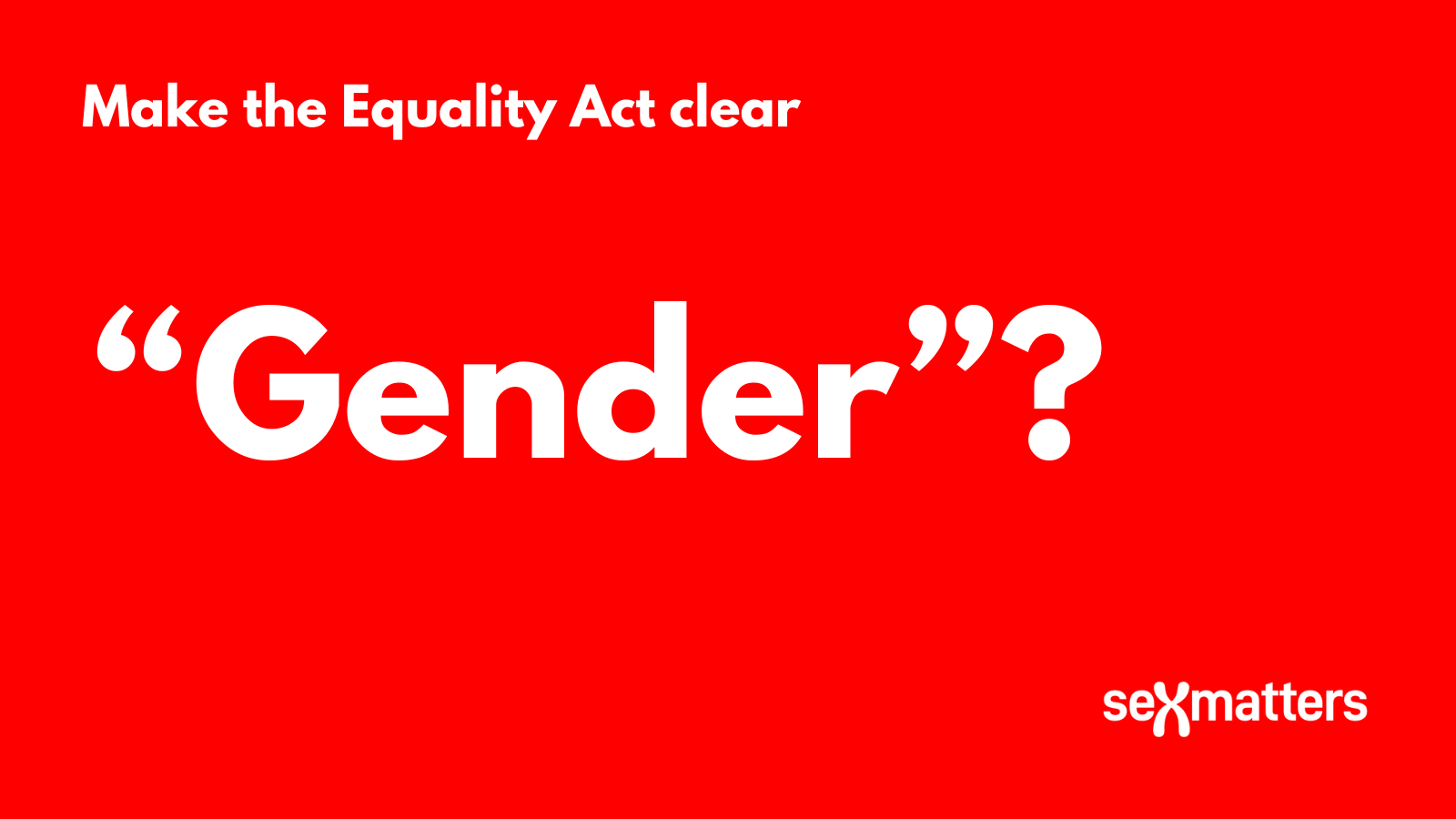Why “sex” and “gender” mean the same thing in law

This is the second in a series of blog posts in the run up to the debate on 12th June about clarifying the Equality Act.
The language of sex and gender is a confusing quagmire.
The amendment we are proposing aims to clarify one particularly important thing: that the protected characteristic of “sex” in the Equality Act means whether someone is male or female (their biology) and is not modified by a gender-recognition certificate.
Some people have argued for “sex” and “gender” both to be defined clearly in law (see for example the recent paper by Keep Prisons Single Sex). We think this would be a mistake (although we agree on much else).
Sex and gender can mean different ideas in everyday speech and social science. And the term “gender” is often used as a polite synonym for sex, such as when asking someone to fill out a form. This has contributed to ambiguity about whether people are expected to answer with their true sex, or the sex they wish they were (and whether officials should indulge this).
The architects of the Gender Recognition Act took advantage of this ambiguity in language, but they did not create a separate legal categorisation of people by “gender”; rather they created a law that deemed some people to have changed sex for the purposes of some laws.
Where the word “gender” is used in legislation to refer to the categories of male and female it still means sex. For example, the Education (Pupil Registration) (England) Regulations 2006 require that schools keep a record of every child on the roll, including their sex. Another regulation requires that schools submit this information to the Department for Education each year, but uses the term “gender”. It means sex. Another example is the judgment in the case of McConnell v The Registrar General, concerning whether a female person with a GRC who gives birth could be registered as a father. It states:
“Although for most purposes a person must be regarded in law as being of their acquired gender after the certificate has been issued, where an exception applies, they are still to be treated as having their gender at birth.”
“Gender at birth” here means the same thing as “sex at birth”. We are not born with a separate legal sex and legal gender.
It would be clearer if legislators and judges would simply say “sex” and drop the synonym “gender” altogether.
Should “gender” have its own definition?
The Council of Europe Convention on combating violence against women and domestic violence (the Istanbul Convention) defines gender as:
“the socially constructed roles, behaviours, activities and attributes that a given society considers appropriate for women and men”.
This might be interpreted simply as a description: there are women (female) and men (male) and societies have different expectations for them. Or it could be interpreted as a statement that “man” and “woman” are genders and that you fall into one or other category depending on which constructed roles, behaviours, activities and attributes you perform.
The Council of Europe says that the first, more straightforward, approach is what it means:
“This term neither replaces the biological definition of ‘sex’ nor the terms ‘women’ and ‘men’, but rather emphasises how much inequalities, stereotypes and – consequently – violence do not originate from biological differences, but rather from a social construct: that is to say, by attitudes and perceptions of how women and men are and should be in society.“
This makes sense in terms of understanding that men and women face different gendered burdens placed on their respective sexes and that the state should not encourage people to be constrained by such stererotypes, and should act where people are unfairly disadvantaged because of them.
Rules that say only men or only women can perform particular socially constructed roles have rightly been removed from law (and are outlawed in employment and services by sex-discrimination provisions). Where the law distinguishes between men and women (rather than applying simply to people) it should be for a good reason, which can justified by one of the familiar conditions under which human rights and freedoms are qualified – such as public safety, the prevention of disorder or crime, the protection of health or morals, or the protection of the rights and freedoms of others.
But the extent to which individuals conform to expectations of masculinity and femininity is not a matter that impinges on those areas, and so it is not the business of the state to regulate. People are free to use the word “gender” in any way they like (and to dress however they please and call themselves whatever they like). But the law has no business defining gender and categorising people according to these socially constructed roles.
The two concepts which do need to be clearly distinguished in the Equality Act are the protected characteristics of “sex” and “gender reassignment”. Being discriminated against because of being transgender (someone being called a “tranny” and refused service in a pub, for example) is different from sex discrimination. Both are prohibited separately by the Equality Act.
